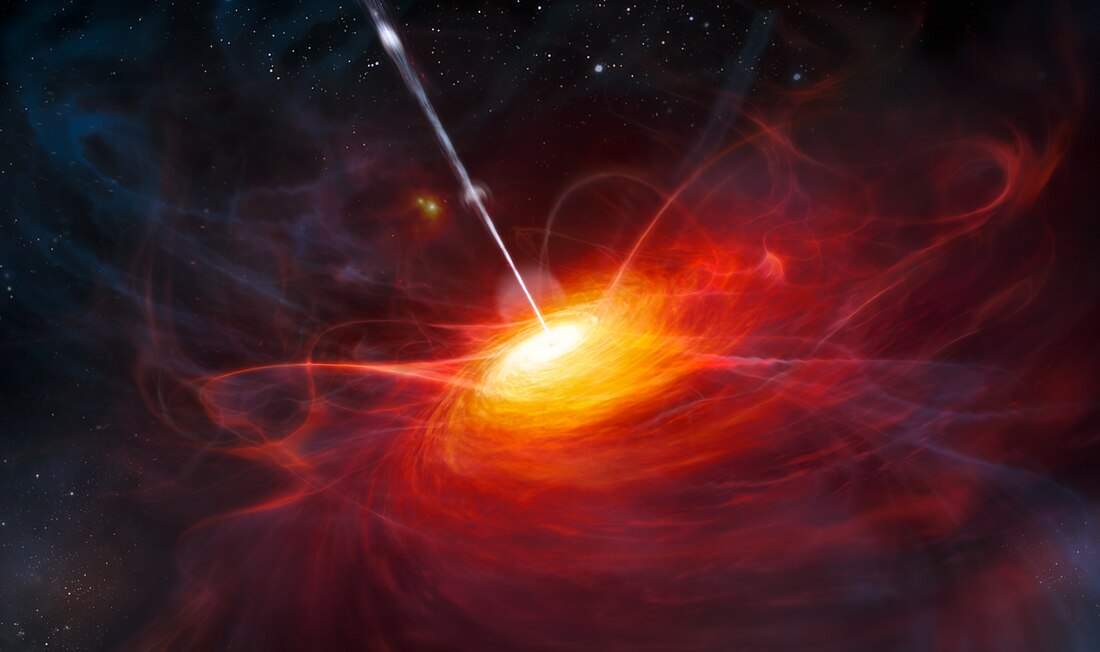Quasar
active galactic nuclei containing a massive black hole From Wikipedia, the free encyclopedia
Remove ads
Quasars or quasi-stellar radio sources are the most energetic and distant active galactic nuclei (AGN).



They are quite small in comparison with the energy they put out. Quasars are not much larger than the Solar System.[3] The mechanism of brightness changes, probably involves relativistic beaming of jets pointed nearly directly toward us.[4] The highest redshift quasar known (as of June 2011[update]) has a redshift of 7.085, which means it is about 29 billion light-years from Earth. This estimate is made using the concept of comoving distance.
Scientists now agree that a quasar is a compact region in the center of a massive galaxy surrounding a central supermassive black hole.[5] Its size is 10–10,000 times the Schwarzschild radius of the black hole. The energy emitted by a quasar is gravitational energy, created from mass falling onto the accretion disc around the black hole.
Quasars are extremely luminous. They were first identified as being high redshift sources of electromagnetic radiation, including radio waves and visible light. The light (and other energy) appeared to be similar to stars, rather than large sources like galaxies. On the other hand, their spectra had very broad emission lines, unlike any known from stars, hence "quasi-stellar". Their luminosity can be 100 times greater than that of the Milky Way.[6]
The accretion discs of central supermassive black holes can convert about 10% of the mass of an object into energy.[7] This mechanism explains why quasars were more common in the early universe, as this energy production ends when the supermassive black hole consumes all of the gas and dust near it.
This means that most galaxies, including our own Milky Way, may have gone through an active stage as a quasar or some other class of active galaxy. They are now dormant because they lack a supply of matter to feed into their central black holes to generate radiation.
Remove ads
Brightest quasars
The most luminous (or brightest) thing in space (as of 2024's first quarter), is QSO J0529-4351, a quasar.[8][9][10]
References
Related pages
Wikiwand - on
Seamless Wikipedia browsing. On steroids.
Remove ads
